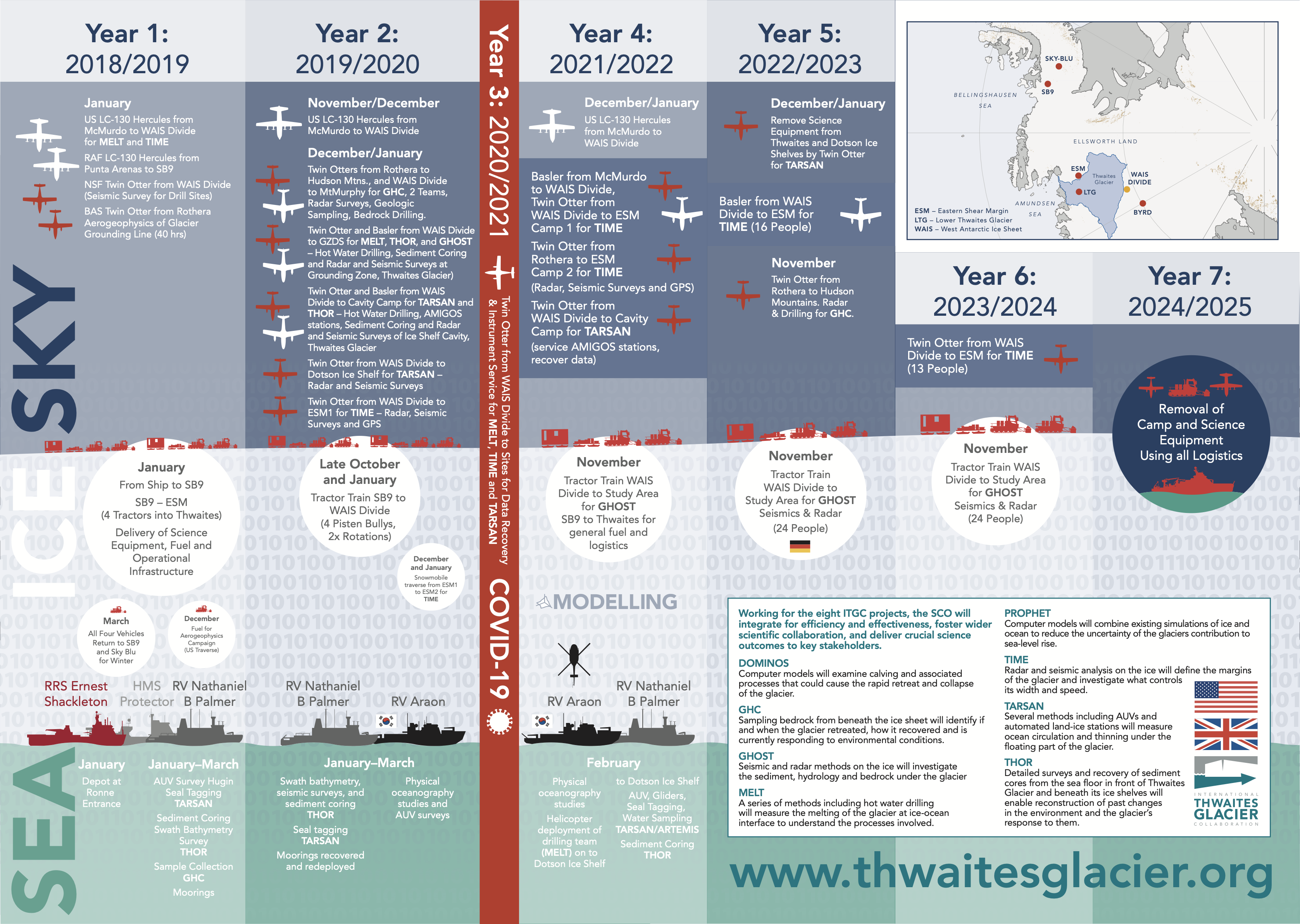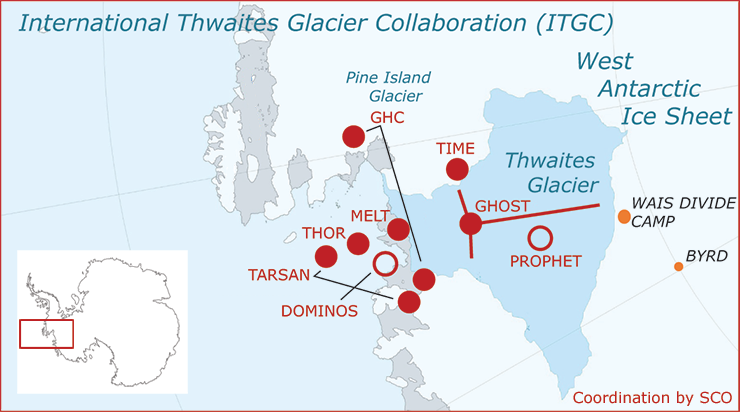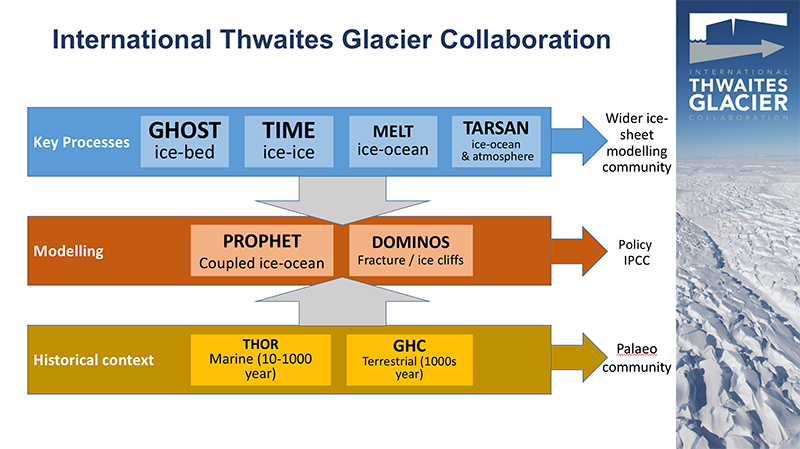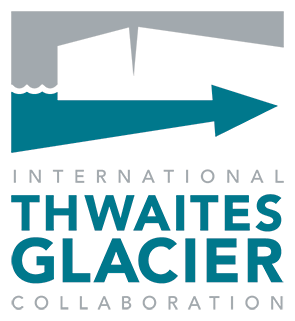
[Click here to open the above science infographic in a new window.]
The largest Earth science funding agencies in the United Kingdom and the United States are collaborating to investigate one of the most unstable glaciers in Antarctica. The US National Science Foundation (NSF) and UK Natural Environment Research Council (NERC) are teaming up to study a rapidly changing glacier roughly the same size as Florida or Britain.
The NERC and NSF partnership, called the International Thwaites Glacier Collaboration (ITGC), covers research across Thwaites Glacier and its adjacent ocean region; the glacier flows into Pine Island Bay, part of Amundsen Sea. ITGC is the largest joint UK-US project undertaken on the southern continent in 70 years.
Over the past 30 years, the amount of ice flowing out of this 120-kilometer-wide region has nearly doubled. Overall the glacier is the size of the island of Britain, or the state of Florida, and it straddles some of the deepest bedrock in the southern continent.
Warm ocean water from the Amundsen Sea circulates under the ice, causing it to melt. Melting loosens the ice from the bedrock below, causing it to flow faster and eventually to retreat into the deeper and thicker ice areas where it is likely to speed up still more.
Starting in 2018, and over the next five years, teams of scientists will explore the ocean and marine sediments, measure currents flowing toward the deep ice, and examine the stretching, bending, and grinding of the glacier over the landscape below. The project will involve more than 60 scientists and students.
 ITGC projects focus on different aspects of Thwaites Glacier, operating in varying geographic locations.
ITGC projects focus on different aspects of Thwaites Glacier, operating in varying geographic locations.Thwaites Glacier (in darker blue) drains a vast part of the West Antarctic Ice Sheet, extending over 192,000 square kilometers, or 74,000 square miles—an area the size of Florida or the island of Britain. Each of the ITGC field projects, shown as red solid circles, has a principle geographic focus of their study, related to the processes they intend to study. The two modeling studies, PROPHET and DOMINOS are shown as open circles in orange. TIME is a study of how the boundary of the glacier evolves, and what the differences are between the slow-moving ice and underlying rock outside the glacier is versus the interior. GHOST is a traverse of the core of the glacier, looking at ice and bedrock characteristics with seismic and radar data. GHC will collect rock samples from either side of Thwaites Glacier to look for clues as to its recent past history—as will the THOR project, using marine sediments, bathymetric mapping, and oceanography. MELT and TARSAN both have a focus on the ice-ocean interaction at the point of contact between land, ice, and sea, looking at ocean circulation and rates of ice melt near the front of the glacier. SCO coordinates other projects.
 ITGC works with the wider ice-sheet community, policy, and palaeo science. Image courtesy David Vaughan.
ITGC works with the wider ice-sheet community, policy, and palaeo science. Image courtesy David Vaughan.Each of the ITGC projects has a close relationship with the overall program to build a better understanding of the glacier and its environment, and transmit that new knowledge to the public, the wider science community, and policymakers. Four of the projects, GHOST, TIME, MELT, and TARSAN, are focused on natural processes that drive the glacier to retreat or control its response to climate. Better awareness of these key processes, such as ocean-driven melting of the ice, ice flow over the bedrock, or shearing within the ice sheet along the sides of the glacier, is critical to improving models of the glaciers’ future behavior. The recent history of this part of the West Antarctic Ice Sheet will be explored by the THOR and GHC projects, focused on marine sediment records and records contained in nearby rock outcrops, respectively. All these observational projects will provide input to the two modeling studies, PROPHET and DOMINOS, which will strive to create a better forecast of the glacier’s retreat, and explore conditions that could lead to a rapid increase in ice loss.






